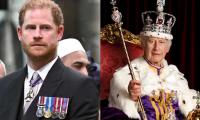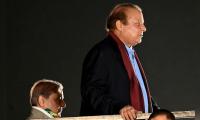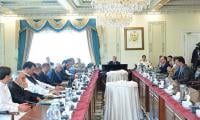A banker by profession, Salim Ansar has a passion for history and historic books. His personal library already boasts a treasure trove of over 7,000 rare and unique books.
Every week, we shall take a leaf from one such book and treat you to a little taste of history.
BOOK NAME: A Full Service Bank - BCCI
AUTHOR: James ring Adams/Douglas Frantz
PUBLISHER: Simon & Schuster - London
DATE OF PUBLICATION: 1993
The following excerpt has been taken from Pages: 25 — 29
“Western banks concentrate on the visible, whereas we stress on invisible.
— Agha Hasan Abedi, Founder, the Bank of Credit and Commerce International
AGHA HASAN ABEDI AND BCCI
“The movement of Muslims to their new homeland, and Hindus out of it was the greatest mass migration in history. It also was violent and deadly. Some Hindus who were being displaced, such as the ruling class of Kashmir, fought against being included in Pakistan. Similarly, some established Muslims were reluctant to leave India, even though they were immediately subjected to harassment and worse. As the two-way migration took place, there were countless clashes along dusty and crowded roads. A million Hindus and Muslims were killed or starved to death along the migration routes during the post partition period. Yet from this violence came new opportunities for Abedi and his compatriots.
“Habib Bank moved its headquarters from Bombay to Karachi, then only a medium-sized backwater port on the Arabian Sea. Its staff was entirely Muslim, bright young bankers eager to apply their skills to serve the new cause. Among them was Abedi, thrilled to be starting their careers anew at this crucial juncture in the history of their people.
“ ‘All of us got better chances,’ said Abedi. ‘There was great excitement. Everyone was going to Karachi.’ Habib Bank grew to be Pakistan's largest financial institution, and Abedi climbed steadily through the ranks. Already he was demonstrating leadership qualities, an uncanny knack for persuading staff members to work together.
“One day in 1956, Abedi demonstrated what would become characteristic initiative. An agency of the Karachi municipal government wanted to open a bank branch in its main building, but the government-run National Bank was slow to respond. When Abedi heard about the opportunity, he took a few tables and a safe to the building the next day and opened the newest branch of Habib Bank.
“In the late fifties, Abedi was ambitious and restless. He met Mian Yusif Saigol, a textile magnate and patron of one of the so-called Twenty-two Families who were coming to dominate Pakistan's economy. A few months after the meeting, Abedi convinced Saigol to finance the start of United Bank Ltd., the first new bank in Pakistan since the creation of the country.
“Zulfikar Ali Bhutto was a shrewd politician and theatrical ruler. When he became president of Pakistan in January 1972, Bhutto decided to put their executives on notice. In the days after he was sworn in, he ordered several of Pakistan's bankers placed under house arrest. Among them was Agha Hasan Abedi.
“This was a watershed event. While restricted to his home under police guard, Abedi hatched his plan for a new bank. The dream that would become the Bank of Credit and Commerce was conceived as a heady mixture of banking and philosophy with an underpinning of nationalism. With Abedi in those critical days was Swaleh Naqvi, a young banker who had worked with him at United Bank and would remain at his side for most of the next two decades.
“Over the next several weeks, Abedi and some prospective assistants met with Bank of America officials. The plan they worked out called for the American bank to invest $2.5 million in exchange for a twenty-five percent share of Abedi's institution. Abedi's connections in the Persian Gulf, chiefly Abu Dhabi, had brought promises of sizable deposits and business from a number of Arab rulers and businessmen.
“In addition to Sheik Zayed, Abedi had commitments from the likes of Kamal Adham, the chief of intelligence in Saudi Arabia and a close adviser to that nation's royal family, and Faisal Saud al-Fulaij, the chairman of Kuwait Airways and a powerful businessman in that tiny nation. There also were promises of business from a host of other sheiks and businessmen scattered around the oil-rich region.
“The new bank was to be called the Bank of Credit and Commerce International. An imposing name, reflecting the unfettered ambitions of its founder. It would be based initially in Abu Dhabi, a symbol to the Gulf region that the new bank had the blessing of a powerful ruler. But plans were already in the works to move into other countries. And a strategy was being developed to ensure that Abedi's new bank never faced the threat of nationalization that confronted the institution he had founded in Pakistan.
“Indeed, it was this desire to escape government control that led Abedi to incorporate his new bank in Luxembourg, a tiny European nation known for its tough bank secrecy laws and lax regulation. The sum of Abedi's life experiences was destined to be reflected in the new bank he had created for himself.
“The bank's early growth was concentrated in the Gulf region, where Abedi could take advantage of his contacts. Roy Carlson, who was supervising the Bank of America's investment and trying to develop contacts, often took business trips with Abedi.
"‘You didn't make calls in offices. That was not the way business was done in the Middle East,’ Carlson said later. ‘Mr. Abedi would arrange luncheons, dinners, and receptions at which I would meet some of the bank's customers or potential customers. He had many strong ties there from his previous years. But there also were always new people being courted as well.’
“These affairs were very Middle Eastern. Often Carlson found himself seated on the floor of an ornate palace, sipping sweet tea from small silver cups. Arrayed around him would be a half dozen or more men dressed in robes, the long, flowing, shirt like garment, and ghutras, the traditional Arab headdress. Sometimes during these long sessions the conversation would be pierced by a high-pitched wail: ‘Allah uh Akbar’ - God is great. With the call to prayer, the men would kick off their sandals and kneel in lines on small rugs, facing Mecca and chanting their prayers.
“At any bank in the world, wealthy customers are treated differently from the everyday clientele. In the Arab world, where royal treatment is more than just a phrase, this practice often involved courtesies such as bestowing gifts on valued customers and performing a large number of personal services. Banking was a very personal business.
Carlson had lived in the Middle East himself, so he did not find these gatherings and frequent gifts a strange way to conduct business. Indeed, he was an admirer of the Arab people and their distinct language, dress, behavior, and thoughts. If neither he nor Abedi ever felt quite at home among them, they also never dismissed them simply because they did business in a different way.
“The fledgling Bank of Credit and Commerce was positioned perfectly to take advantage of the events of 1973. The Persian Gulf region was about to become the wildest frontier in banking, and Agha Hasan Abedi's vision of a vast banking empire was about to get a jump start.
“The riches of the region had been controlled for forty years by such Western companies as Standard Oil and Royal Dutch Shell. They doled out a percentage of the profits to the sheiks who owned the land and retained the bulk of the money for themselves. Perhaps more importantly, the Westerners controlled the quantity and price of the oil that came from the vast reserves beneath Arabia.
“It is an unrivaled story of intrigue, deception and manipulation. Rumors began to circulate about the unconventional treatment afforded the bank's wealthy customers. Perhaps they were true. Perhaps they were stoked by resentment toward the Arabs and their dark-skinned bankers. Whatever the truth, many of the bank's competitors complained that BCCI was stealing their biggest customers with its aggressive and questionable business approach'.
“BCCI was at one point the seventh largest private bank in the world. Over the years, it developed into a worldwide banking operation with branches in 72 countries and 16,000 employees on its payroll. The bank was always solvent because it was backed by seemingly limitless Arab oil money.
“In spite of the solvency of the bank, at one o'clock in the afternoon on July 5, 1991, officials of the Bank of England marched into the twenty-five branches of the Bank of Credit and Commerce International in Britain and ordered employees to leave. From small offices in the Asian north end of London to the lavish main office in the financial district, the regulators locked the doors and began boxing up thousands of bank records. Simultaneously, regulators swept down on the bank's branches and offices in the United States, France, the Cayman Islands, Spain, and Switzerland.
“In Luxembourg, the bank's official headquarters, the tiny duchy's entire judiciary was attending an official picnic in the countryside. Bank regulators had to track them down and find a judge to sign an order to close the bank. While the order was being signed, armed guards stood outside the conference room at the bank's headquarters. Behind the closed doors, representatives of the government of Abu Dhabi, BCCI's principal shareholder, were meeting in a last-ditch attempt to salvage the bank with an infusion of cash and new management, unaware of the drama beginning around the world. So desperate was the Persian Gulf sheikdom to keep the bank open that its officials were meeting on a Friday, the Muslim sabbath. The bank's board members were still inside the conference room when the regulators arrived to seize the bank. They could see the massive global assault on BCCI for what it was, the beginning of the end.
salimansar52@gmail.com
https://www.facebook.com/PagesFromHistoryBySalimAnsar
Representational file. — APP FileRawalpindi:A speedy bus overturned after hitting an electric pole resulting in...
Political Counsellor of Great Britain in Pakistan, Zoe Ware called on Federal Minister for Privatisation, Board of...
The delegation, accompanied by senior officials from the British Council and the Higher Education Commission of...
Inspector General of Police Islamabad, Syed Ali Nasir Rizvi. — Radio PakistanIslamabad: In light of the special...
National Commission for Human Rights logo. — Facebook/National Commission for Human RightsIslamabad: The National...







